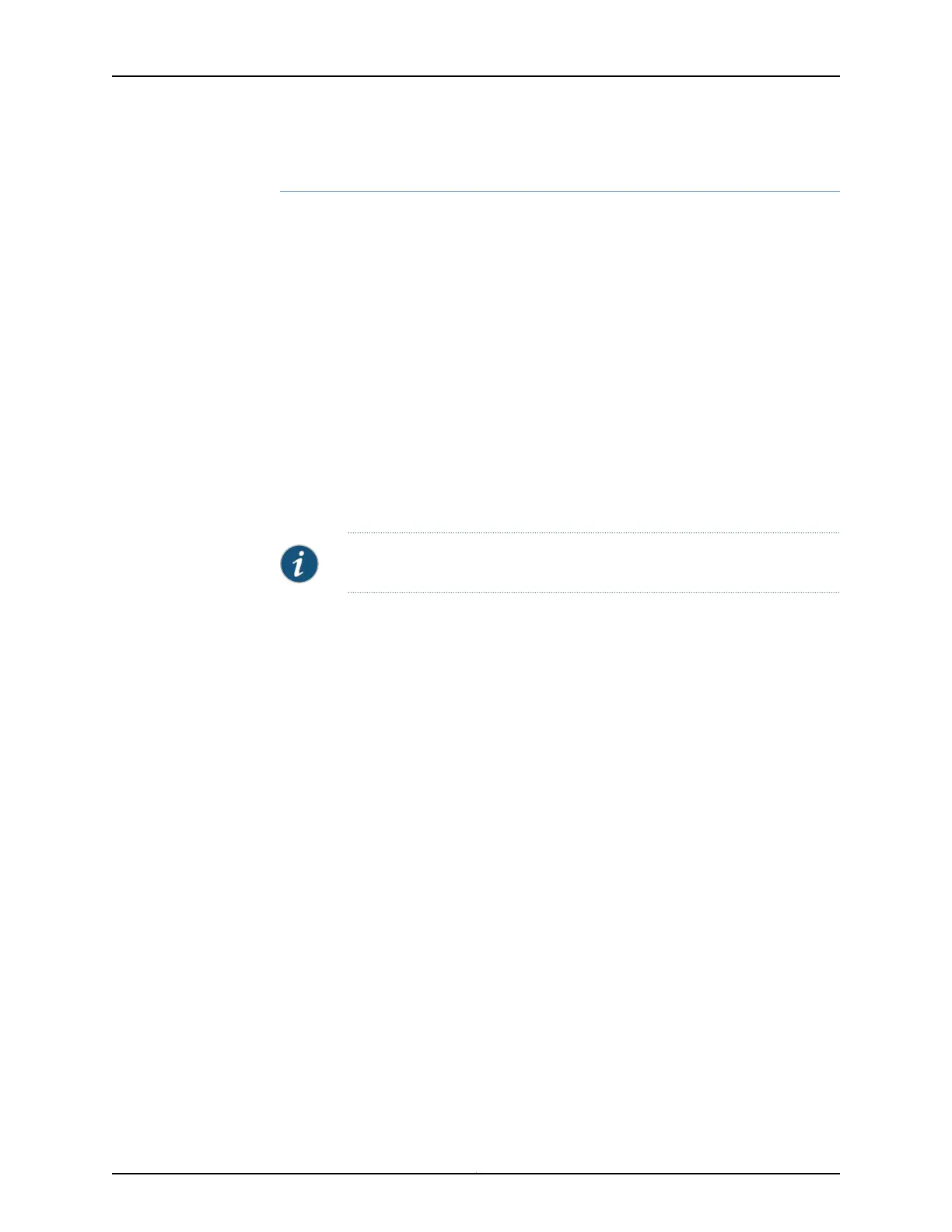Configuring the Site Range
When you enable BGP signaling for each VPLS routing instance, you can optionally
configure the site range. The site range specifies an upper limit on the maximum site
identifier that can be accepted to allow a pseudowire to be brought up. You must specify
a value from 1 through 65,534. The default value is 65,534. We recommend using the
default. Pseudowires cannot be established to sites with site identifiers greater than the
configured site range. If you issue the show vpls connections command, such sites are
displayed as OR (out of range).
To configure the site range, include the site-range statement:
site-range number;
You can include this statement at the following hierarchy levels:
•
[edit routing-instances routing-instance-name protocols vpls]
•
[edit logical-systems logical-system-name routing-instances routing-instance-name
protocols vpls]
NOTE: ACX Series routers do not support the [edit logical-systems] hierarchy.
There are networks that require that the site range be configured using a value smaller
than the local site identifier, for example, a hub-and-spoke VPLS with multihomed sites.
For this type of network, you need to allow pseudowires to be established between the
spoke routers and the hub router. However, you also need to prevent pseudowires from
being established between spoke routers directly. Due to the multihoming requirement
of spoke sites, Layer 2 VPN NRLIs need to be accepted from other spoke routers (at least
from spokes with the same site identifier as the locally configured sites) to determine
the status of local spoke routers (active or not active) based on the local preference
included in the NRLIs received from the other spoke routers.
This type of VPLS network can be implemented by, for example, numbering hub sites
with identifiers 1 through 8 and spoke sites with identifiers 9 and larger. You can then
configure a site range of 8 on each of the spoke sites. Although the spoke sites accept
NRLIs and install them in the Layer 2 VPN routing tables (allowing the multihomed sites
to determine the status of the local site), the spoke sites cannot establish pseudowires
directly to the other spoke sites due to the configured site range.
The following configurations illustrate this concept. The configurations are for the VPLS
routing instances on three routers, two spoke routers and one hub router:
Router 1—spoke:
routing-instance hub-and-spoke {
no-local-switching;
protocols {
vpls {
site-range 8;
no-tunnel-services;
1243Copyright © 2017, Juniper Networks, Inc.
Chapter 35: Configuring Virtual Private LAN Service

